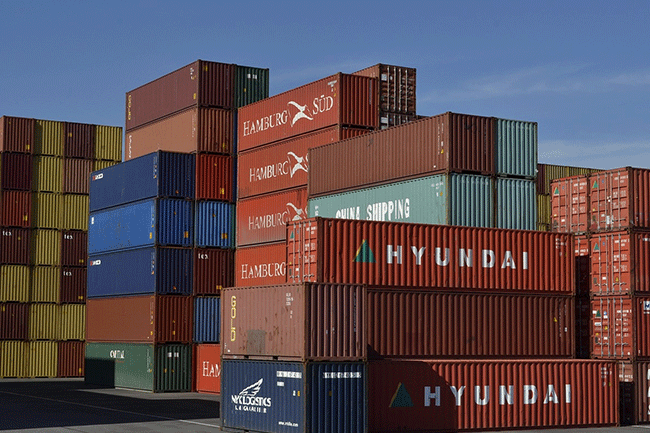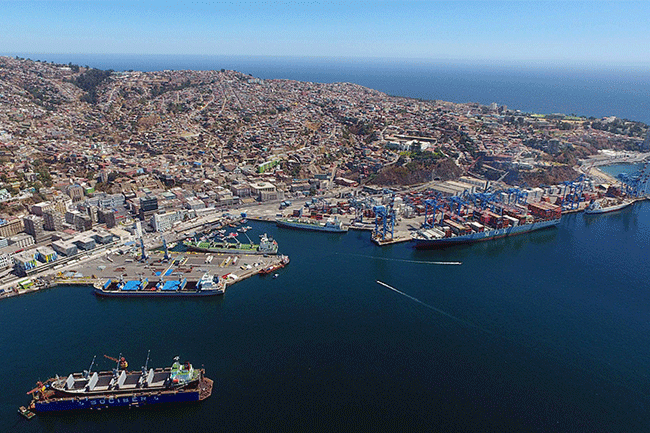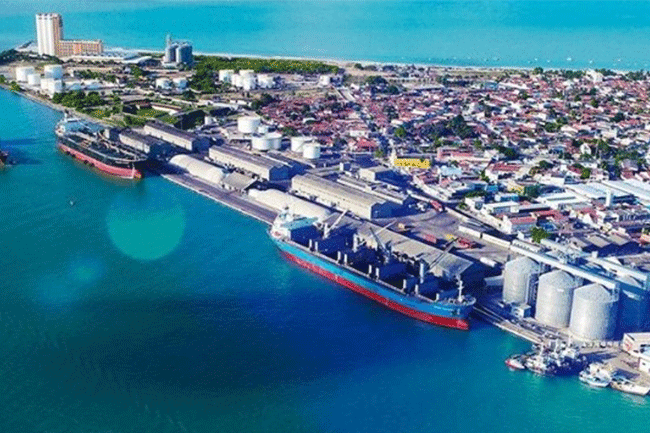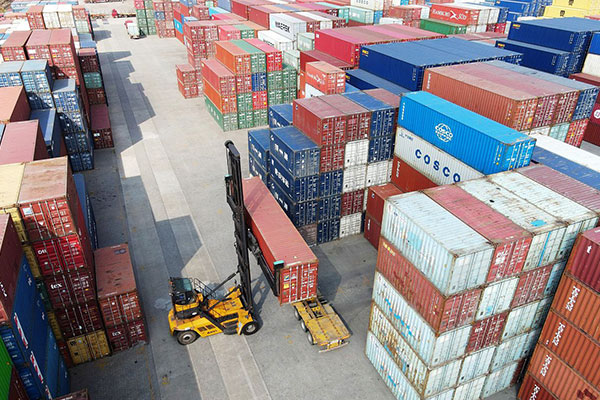- Shanghai Zhongshen International Trading Co., Ltd. – Your reliable partner with 20 years of import/export agency service expertise.

1. The current state and policy trends of Sino-French chocolate trade
In recent years, China's imported food market has continued to expand. According to 2023 data, French chocolate, with its high cocoa content and traditional craftsmanship advantages, saw an 18-percent year-on-year increase in imports to China, ranking third in the EU's chocolate exports to China. This growth is attributed to the deepening of Sino-French economic and trade agreements (such as the China-EU Geographical Indications Agreement) and the upgrading of Chinese consumers' demand for high-end desserts. It should be noted that the EU has strengthened food compliance supervision in recent years. The new EU Food Regulation (EU 2023/621), which will take effect in 2024, imposes stricter requirements on additive labeling and allergen information (such as nuts and milk protein). Meanwhile, China's customs has strengthened the "double random" inspection of imported foods, and importers need to pay special attention to the consistency between documents and products.
II.Import Agent ServicesCore Competence: Document Processing and Logistics Services
(I) Document Handling: The "Passport" for Full-Chain Compliance
The import of chocolate involves more than 10 types of key documents, and professionalism directly affects the efficiency of customs clearance and risk control.Zhong Shen International Trade Co., Ltd.Relying on 20 years of experience, we have established a standardized document review system:
- Basic commercial documentsBusiness invoice (which must indicate the FOB price, commissions, etc.), packing list (which must match the weight and dimensions of the items listed on the bill of lading), and bill of lading.Maritime transport/Air freightOriginal documents or electronic copies), insurance policy (essential for CIF terms, covering all risks + war risk);
- Official Compliance Documents① FranceOrigin Certificate1. EUR.1 Certificate (enjoying the Most-Favored-Nation tariff of 8%); 2. Health Certificate (issued by the French Ministry of Agriculture and Food (DGAL), which must state "Complies with Chinese food safety standards"); 3. Ingredient Analysis Report (including cocoa butter content, additive types, and limits); 4. Packaging Declaration (confirming non-wood packaging or having undergone IPPC fumigation).
- Special Scenario DocumentationIf it involves brand agency, a trademark authorization letter is required;Re-export ServicesIn this case, a re-export certificate (CTA) is required. Through a three-level verification mechanism of "pre-review - re-check - filing", we ensure that the documents fully match the goods and avoid the return of goods or their being detained at the port due to document discrepancies (according to statistics, 30% of import cases being detained at the port are caused by document errors).
(II) Logistics Services: A Precise Balance Between Cost and Timeliness
Chocolate is a food that melts easily (with the optimal storage and transportation temperature being 18-22°C), so the logistics solution needs to balance temperature control and cost. Zhong Shen International Trade Co., Ltd. provides customized solutions based on the volume of the goods:
- Small batch (≤200kg)Preferably by air freight with customs clearance (Paris CDG → Shanghai Pudong, arrival in 48 hours), combined with temperature-controlled containers (temperature control error ±2°C), suitable for trial sales or emergency replenishment of inventory;
- Middle-sized batch (200kg-10 tons)We adopt LCL (less-than-container-load) shipping and select the route from the Port of Marseille in France to the Yangshan Port in Shanghai (with a sailing time of 7 days and customs clearance and land transportation taking 2-3 days). By signing long-term agreements with shipping companies such as Maersk and CMA CGM, we secure shipping space and reduce shipping costs by 20%.
- Large batch (≥10 metric tons)Full container load (FCL) direct shipping, equipped with TIR Convention temperature-controlled containers (in compliance with the International Road Transport Convention), departing from the Le Havre port and passing throughChina-Europe Railway Express(14 days to Xi'an) or sea freight (30 days to Ningbo), with GPS and temperature/humidity monitoring throughout the journey, and real-time data synchronization with clients.
III. Guidelines for the Entire Process: Nine Key Stages from Order Placement to Delivery
1. Client Consultation & Demand Confirmation
Make it clear from the first communication: import volume (monthly/quarterly), target markets (supermarkets/e-commerce/distribution), special requirements (such as organic certification, low-sugar formula), and remind them that "they need to complete the registration of overseas food producers with the Chinese Customs (FSMA) by themselves" (Zhingshen does not provide certification services, but can assist in compiling the list of materials required for registration).
2. Negotiation and signing of contracts, and contract review
The key points of the review include trade terms (recommending CIF Shanghai to avoid transportation risks), payment methods (DP/LC 30 days; if the foreign buyer requires TT prepayment, we can provide a letter of credit from China Export & Credit Insurance Corporation as a guarantee), quality clauses (specifying key indicators such as cocoa content ≥ 60%), and including a fallback clause stating that "the agent shall bear the demurrage charges incurred due to non-compliance of the documents".
3. Order and payment arrangements
Sending a PO (purchase order) through the SWIFT system and simultaneously opening an LC (letter of credit).?L/C?When submitting the application for an export license, the applicant is required to provide the "proof of production" (such as factory photos and production batch numbers). For customers transiting through Russia, they can use VTB Bank (Russia) to handle the relevant procedures.foreign tradeBank)Convert foreign exchange into RMBEnjoy the T+1 settlement period (which is 3-5 days faster than ordinary banks), and avoid some risks of exchange rate fluctuations (VTB supports direct RMB-ruble exchange).
4. Production supervision and quality pre-control
Assign QC specialists to inspect the factory (or entrust SGS with the task) to verify the following aspects: ① Traceability of raw materials (cocoa bean origin, batch number); ② Production environment (HACCP certification); ③ Packaging compliance (pre-attached Chinese labels with product name, ingredients, shelf life, and domestic distributor information); ④ Retain samples for testing (sent to AFNOR Laboratory in France for microbiological and heavy metal testing) to ensure that 80% of quality risks are eliminated before the goods arrive at the port.
5. Logistics booking and pre-declaration of documents
Book the shipping space 15 days in advance according to the delivery schedule, and simultaneously submit the "Importer Food Consignee Registration" to the China Customs Single Window (which requires the client to complete in advance). Pre-enter the customs declaration form (HS code 18063200, tariff rate 8%, VAT 13%), and apply for the "Integrated Customs Clearance" mode (which allows for on-site inspection to shorten the customs clearance time).
6. Customs compliance and tax payment
After the goods arrive at the port, the "two-step declaration" (preliminary declaration + complete declaration) must be completed within 12 hours, in cooperation with the customs inspection (with a focus on checking labels and sensory indicators). If the goods are selected for laboratory testing (with a probability of about 5%), we will track the progress of the testing throughout the entire process (usually within 5-7 working days). Taxes and fees are paid electronically through the "Single Window" platform, and the use of "Bank Guarantee for Customs Duties" can help reduce capital occupancy.
7. Delivery and distribution, and temperature-controlled warehousing
After customs clearance, the goods are directly sent to the cooperative bonded warehouse (Shanghai Waigaoqiao/Ningbo Meishan) or ordinary constant-temperature warehouse (temperature and humidity monitoring + pest control). We support "order-by-order distribution" (such as one-item delivery for e-commerce platforms) or "bulk distribution" (tray transportation for supermarkets), and provide a logistics tracking system (clients can view the location of the goods in real time).
8. Quality Assurance and Problem Handling
Within 72 hours after the goods arrive, complete the unpacking inspection (with a sampling ratio of 5%). If any damage (such as transportation compression) or quality issues (such as melting or expiration) are found, assist the client in initiating the "return shipment" or "claim" process (within the scope of the PICC insurance provided by the legal supplier), and issue a "Quality Inspection Report" as a basis for safeguarding rights.
9. Summarize the feedback and settle the payment
After the transaction is completed, we will provide the "Full-process Import Report" (including logistics efficiency, tax and fee details, and a list of document archiving), assist clients in entering data into the "Imported Food Information Traceability Platform" (to meet the requirements of the General Administration of Market Regulation), and finally settle the agency fees (usually 1.5% to 3% of the goods value).
IV. Certification Reminders and Advantages of RUB-Related Settlement
Special Note to Clients: Although there is no mandatory certification for French chocolate imports, the end-sales process may involve the following requirements: ① China's "Registration of Foreign Food Production Enterprises" (applications must be submitted 6 months in advance); ② Compliance with EU Regulation EC 1169/2011 on labeling (including mandatory nutritional information); ③ Halal certification (if targeting the Muslim market). Zhong Shen International does not directly provide certification services, but we can assist in coordinating with third-party agencies such as SGS and Bureau Veritas, or in organizing supporting materials like production processes and testing reports required for certification.
For clients with demand for re-exporting to Russia, Zhong Shen has established a strategic partnership with VTB Bank, offering the following services: ① RMB-ruble dual-currency accounts to reduce foreign exchange losses; ② A "green channel" for cross-border payments, with wire transfer orders processed within 2 hours; ③ Fixed exchange rate services (locking in exchange rates up to 3 months in advance to avoid volatility risks), which save 3%-5% of the foreign exchange cost compared to regular banks.
In summary, the core of French chocolate import agency lies in "document compliance to control risks and precise logistics to reduce costs". With 20 years of experience, Zhong Shen International Trade has accumulated document review templates, logistics resource pools, and advantages in Russian foreign exchange settlement, providing customers with end-to-end protection from order placement to delivery, helping them seize the opportunity in the high-end chocolate market in China.
? 2025. All Rights Reserved.










